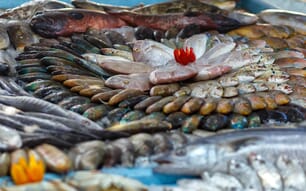The per centage of open ocean shark species threatened with extinction is higher for the sharks taken in high-seas fisheries (52 per cent), than for the group as a whole.
“Despite mounting threats, sharks remain virtually unprotected on the high seas,” says Sonja Fordham, Deputy Chair of the IUCN Shark Specialist Group and Policy Director for the Shark Alliance. “The vulnerability and lengthy migrations of most open ocean sharks mean they need coordinated, international conservation plans. Our report documents serious overfishing of these species, in national and international waters, and demonstrates a clear need for immediate action on a global scale.”
The report comes days before Spain hosts an international summit of fishery managers responsible for high seas tuna fisheries in which sharks are taken without limit. It also coincides with an international group of scientists meeting in Denmark to formulate management advice for Atlantic porbeagle sharks.
IUCN experts classify the Great Hammerhead (Sphyrna mokarran) and Scalloped Hammerhead (Sphyrna lewini) sharks, as well as Giant Devil Rays (Mobula mobular), as globally Endangered. Smooth Hammerheads (Sphyrna zygaena), Great White (Carcharodon carcharias), Basking (Cetorhinus maximus) and Oceanic Whitetip (Carcharhinus longimanus) sharks are classed as globally Vulnerable to extinction, along with two species of Makos (Isurus spp.) and three species of Threshers (Alopias spp.).
Porbeagle Sharks (Lamna nasus) are classified as globally Vulnerable, but Critically Endangered and Endangered in the Northeast and Northwest Atlantic, respectively. The Blue Shark (Prionace glauca), the world’s most abundant and heavily fished open ocean shark, is classified as Near Threatened.
Many open ocean sharks are taken mainly in high seas tuna and swordfish fisheries. Once considered only incidental “bycatch”, these species are increasingly targeted due to new markets for shark meat and high demand for their valuable fins, used in the Asian delicacy shark fin soup. To source this demand, the fins are often cut off sharks and the rest of the body is thrown back in the water, a process known as “finning”. Finning bans have been adopted for most international waters, but lenient enforcement standards hamper their effectiveness.
Sharks are particularly sensitive to overfishing due to their tendency to take many years to mature and have relatively few young. In most cases, pelagic shark catches are unregulated or unsustainable. Twenty-four per cent of the species examined are categorized as Near Threatened, while information is insufficient to assess another 25 per cent.
The report is based partially on an IUCN Shark Specialist Group workshop funded by the Lenfest Ocean Program. Fifteen experts from government agencies, universities, non-governmental organizations, and institutions around the world took part. This and other regional workshops have contributed to the development of the Shark Specialist Group’s Global Shark Red List Assessment, supported by Conservation International and the New Hampshire Charitable Foundation.
“The completion of this global assessment of pelagic sharks and rays will provide an important baseline for monitoring the status of these keystone species in our oceans,” says Roger McManus, Vice-President for Marine Programs at Conservation International.
The IUCN Shark Specialist Group calls on governments to set catch limits for sharks and rays based on scientific advice and the precautionary approach. It further urges governments to fully protect Critically Endangered and Endangered species of sharks and rays, ensure an end to shark finning and improve the monitoring of fisheries taking sharks and rays.
Governments should invest in shark and ray research and population assessment, minimize incidental bycatch of sharks and rays, employ wildlife treaties to complement fisheries management and facilitate cooperation among countries to conserve shared populations, according to the group.
Further Reading
| - | You can view the full report by clicking here. |

